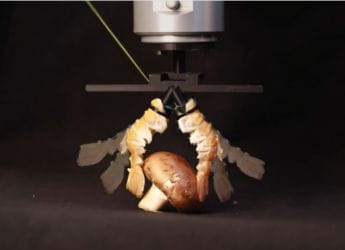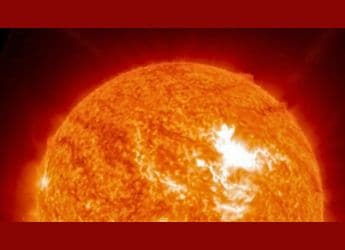- Home
- Science
- Science News
- NASA Captures Striking Image of Galaxy NGC 7456, 51 Million Light Years Away
NASA Captures Striking Image of Galaxy NGC 7456, 51 Million Light-Years Away
Hubble’s latest view of galaxy NGC 7456 highlights glowing star nurseries, dust clouds, and X-ray sources.

Photo Credit: ESA/Hubble & NASA, D. Thilker
Hubble's image of NGC 7456, 51M light-years away, shows star birth, dust clouds & ultraluminous X-rays
With the naked human eye, this cosmic stuff looks like nothing more than a fuzzy oval, but the bright stripe in the middle can tell scientists a lot about the tawdry past of star formation in a galaxy. The galaxy NGC 7456 is located more than 51 million light-years away in the constellation Grusthe Crane. The picture also shows some of the galaxy's looser outer regions, where the patchy spiral arms give way to a far more disorderly distribution of stars and dust, and dust lanes in which embedded, darker material winds and weaves its way around the arms of the galaxy.
Young Star Clusters, Star-Forming Regions and Dust in NGC 7456
As per NASA, this week, Hubble released an observing program that aims to study the galaxy's low-density gas and dust with that same data. It allows for images of developing stars and frigid, compact clouds of hydrogen gas that coalesced to form stars, and to see how the galaxy has changed.
Ex-ray puzzles and the active galactic nucleus X-rays
Hubble is not the only telescope to spy NGC 7456. This is just one of many that are observing this plucky galaxy across visible, ultraviolet, and select sub-mid-infrared wavelengths! UlXs are so hot right now. The galaxy had been observed multiple times by ESA's XMM-Newton satellite, which discovered several so-called ultraluminous X-ray sources.
These small, dense things blast out far more X-rays than their size should allow, researchers would have thought. Astronomers are still trying to understand what powers these extreme objects, he said, and NGC 7456 adds a few more examples.
Even the area surrounding the supermassive black hole at its heart is unusually bright and active, making NGC 7456 an active galaxy. It doesn't matter from which angle you view it (whether it is at its heart or at its edge, within the visible spectrum or in X-rays) this galaxy will continue to fascinate for years to come.
Get your daily dose of tech news, reviews, and insights, in under 80 characters on Gadgets 360 Turbo. Connect with fellow tech lovers on our Forum. Follow us on X, Facebook, WhatsApp, Threads and Google News for instant updates. Catch all the action on our YouTube channel.
Related Stories
- Samsung Galaxy Unpacked 2025
- ChatGPT
- Redmi Note 14 Pro+
- iPhone 16
- Apple Vision Pro
- Oneplus 12
- OnePlus Nord CE 3 Lite 5G
- iPhone 13
- Xiaomi 14 Pro
- Oppo Find N3
- Tecno Spark Go (2023)
- Realme V30
- Best Phones Under 25000
- Samsung Galaxy S24 Series
- Cryptocurrency
- iQoo 12
- Samsung Galaxy S24 Ultra
- Giottus
- Samsung Galaxy Z Flip 5
- Apple 'Scary Fast'
- Housefull 5
- GoPro Hero 12 Black Review
- Invincible Season 2
- JioGlass
- HD Ready TV
- Laptop Under 50000
- Smartwatch Under 10000
- Latest Mobile Phones
- Compare Phones
- Realme P4x 5G
- OnePlus Ace 6T
- Nubia Flip 3
- Nubia Fold
- OPPO A6x 5G
- Samsung Galaxy Z TriFold
- Poco F8 Ultra
- Poco F8 Pro
- Asus ProArt P16
- MacBook Pro 14-inch (M5, 2025)
- Poco Pad M1
- Poco Pad X1
- Just Corseca Skywatch Pro
- Honor Watch X5
- Acerpure Nitro Z Series 100-inch QLED TV
- Samsung 43 Inch LED Ultra HD (4K) Smart TV (UA43UE81AFULXL)
- Asus ROG Ally
- Nintendo Switch Lite
- Haier 1.6 Ton 5 Star Inverter Split AC (HSU19G-MZAID5BN-INV)
- Haier 1.6 Ton 5 Star Inverter Split AC (HSU19G-MZAIM5BN-INV)

















